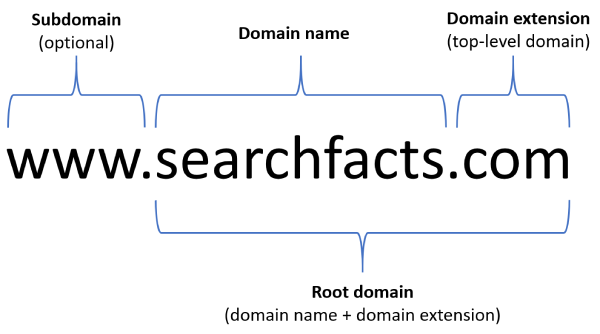If you’re a wise marketer, you would know that in today’s digital world, an online presence is crucial for your business. A study conducted by BIA/Kelsey revealed that almost 97 percent of consumers search for local products and services online. This means that you need an effective business website that gives out your product information in a convincing manner and reflects your brand.

Apart from this, your business website is a perfect place to showcase your Unique Selling Point (USP), or any other awards or certifications, as they make your business look more credible. According to a survey conducted by Verisign, 77 percent of the respondents believed that a website makes a business appear more reliable.
So, whether you’re running a marketing agency or a hardware shop, a well-designed website is central for your company’s growth and success. However, many businesses fail to attract their intended audience because of a poorly designed website. Are you too wondering how to build an effective business website?
Don’t worry, we are here to help! Here are the 7 key steps that can help you in building an end-to-end website for your business:
Step #1 Go For an Optimal Domain Name
It is no surprise that your audience sees your website’s domain name first. Therefore, your domain name, also known as the website address, is one of the most significant elements of your website. This is because an optimal domain name reflects what your business is about, and can be leveraged for search engine optimization (SEO) as well.
The image below shows that a domain consists of three parts:

With unlimited websites being launched every day, it is important to ensure that your domain name stands out in the eyes of your target audience. Unsure how to go about it? Here are some interesting tips and tricks that can help you in coming up with a catchy domain name:
- It is best to avoid any type of slang or difficult to understand words.
- The shorter your domain name, the easier for your target audience to remember, thus you must keep it short and simple.
- Use an appropriate domain extension, such as .com, .edu, .org, etc.
- Don’t use hyphens or numbers in your website’s domain name, as word-only ones are more common and memorable.
- Ensure that your domain name is SEO friendly for higher search rankings.
Step #2 Make Sure Your Website Has a Seamless Navigation
Once you’ve finalized your website’s domain name, the next step is to ensure that it has simple and smooth navigation. This is because if your website visitors will be unable to find the information that they require, they might switch to competitors’ websites. So, while building your website, you should make smooth navigation one of your top priorities.
People often find a website’s navigation tricky. But don’t worry, below are a handful of ways that can help take your website navigation to the next level:
- First and foremost, it is best to link your company’s logo to the home page so that if visitors get lost, they can click the logo and land back on the home page.
- Don’t forget to ensure consistent navigation throughout your website.
- Your website links should be descriptive enough to help the visitors know where they are heading.
- One of the best design practices is to place the navigation bar on the top of your webpages to prevent visitors from getting lost.
Step #3 Ensure a Mobile Responsive Website
Research shows that 74 percent of users are more likely to revisit mobile-friendly websites. With the proliferation of smartphones, it is evident that a large percent of your target audience uses their smartphones to visit your website.
The image below shows how mobile users have outnumbered desktop users, thus making mobile-friendly websites a dire need for your business.

Wondering how to build a mobile-friendly website? We have a list of some simple ways that can help:
- We’ve often heard ‘Simplicity is Key’. Therefore, it is best to keep the web design simple.
- Ensure large website buttons to work on mobile.
- Avoid using any flash animations on the website.
- Reading on a smaller screen is much harder, thus you should use large fonts.
- Do mobile testing regularly to avoid any glitches.
Step #4 Say ‘No’ to Clutter
It is no secret that in the digital era of today, a substantial portion of your sales comes from online marketing sources, such as your business website. Therefore, it is best that you keep your website clutter-free.
Think about it yourself! Do you like to visit decent and informative websites? Or do you prefer visiting websites filled with auto-play videos, pop-up ads, and flash animations? Clearly, the decent and clutter-free ones, right? This is because websites that are overloaded with information prevent the audience from finding what they are looking for.
Are you wondering how to ensure a clutter-free website? We’ve curated a few simple yet amazing tricks that can help:
- Always remember the golden rule, ‘less is more’. Thus, you should remove all the unnecessary elements from your website.
- Your website should have a clear and defined hierarchy for helping the visitors find the information that they are looking for.
- It is best not to experiment with too many colors or font types, as they cause distraction.
- Make sure that your website’s text is placed logically.
Here is a good example of a clutter-free and easy-to-scan landing page by Bzzy.

Step #5 Get a Professional Logo Designed
It is a known fact that your company’s logo is the centerpiece of your business. This is because it reflects your identity, facilitates brand loyalty, and sets you apart from the competition.
All in all, it is essential to note that a poorly made logo won’t serve this purpose. On the other hand, it might give out a negative message regarding your brand. So, if you want a corporate logo for your business that becomes the foundation of your marketing efforts, then you should consider hiring a professional logo company, such as the logo design valley.
However, while hiring a designer, it is best to convey your design requirements comprehensively so that there is no room for errors or confusions.
Step #6 Optimize Your Website Load Time
Research shows that your website speed affects different factors, including its bounce rate, user satisfaction, and lead conversion rate. This means that your website load time plays a vital role in ensuring an effective web design. Do you know why? This is because an optimized and faster website means satisfied visitors and a better user experience, therefore resulting in higher sales in the long run.
Wondering how to increase your website loading speed? Here is how you can ensure a fast website for business success.
Step #7 Create and Publish Engaging Content
The CMI’s digital content marketing survey discovered that 72 percent of marketers said, “Content marketing increases engagement”. This means that it is nearly impossible to ensure an effective web design without a successful content marketing strategy in place.
So, once you’ve created your business website, the next step is to create and publish interesting content items regularly to keep your audience interested.
You should read also Things To Consider When Making Video Content
Conclusion about an effective business website
Now that you’ve learned the tips and tricks of building an effective website for skyrocketing conversions, don’t forget that you can’t ace website building overnight. This is because building an end-to-end website requires patience, creativity, a lot of testing for figuring out what suits your audience, and what doesn’t.
Last but not the least, it must not be forgotten that the final goal of a business website should be to provide a smooth user experience to visitors.
Author Bio
Erica Silva

Erica Silva is a blogger who loves to discover and explore the world around her. She writes on everything from marketing to technology. She enjoys sharing her discoveries and experiences with readers and believes her blogs can make the world a better place.
Find her on Twitter: @ericadsilva1



Leave a Reply